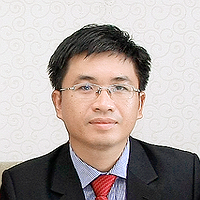Toward Sustainable 6G Wireless Communication Systems
A special issue of Sustainability (ISSN 2071-1050).
Deadline for manuscript submissions: closed (31 January 2024) | Viewed by 15519
Special Issue Editors
2. Department of Electrical Engineering and Information Technology, Ruhr University, 44801 Bochum, Germany
Interests: 6G wireless communication systems; cell-free massive MIMO systems; energy-efficient wireless systems; channel modeling; artificial intelligence; wireless security systems; chaotic communication; sustainable communication; telecommunication networks
Special Issues, Collections and Topics in MDPI journals
Interests: ML/federated learning in wireless systems; heterogeneous networks; massive MIMO; reconfigurable intelligent surface-assisted networks; mmWave communication networks; energy harvesting; full-duplex communications; cognitive radio; small cell; non-orthogonal multiple access (NOMA); physical layer security; UAV networks; visible light communication; IoT system
Special Issues, Collections and Topics in MDPI journals
Interests: cryptography; mathematical cryptography; data security; network security; mobile communications; mobile computing; wireless communications
Special Issues, Collections and Topics in MDPI journals
Special Issue Information
Dear Colleagues,
The enormous communication capabilities of 6G wireless systems that will contribute significantly to global environmental sustainability and offer massive support for various services to promote healthy and economic stability cannot be overemphasized. 6G will bring about a dramatic change in the business arena to facilitate poverty alleviation, resulting in global prosperity and progress. 6G will provide an atmosphere of productivity and accelerated business growth in rural and urban geographies toward achieving sustainable development goals. 6G will provide a user-friendly platform for intelligent analysis of complex data for high-end products and specialized services. These products and services would be well-tailored to address the specific needs of users globally. Moreover, 6G will aid crowdsourcing and enhance cutting-edge distribution platforms to accelerate realizing the equitable distribution of scarce resources. The need to examine how these unprecedented possibilities would be achieved in the 6G era is imperative. This Special Issue calls for original contributions on designing and developing sustainable 6G wireless systems, experimental measurements and propagation models, performance characterization, resource management, standardization challenges, innovative business models, and viable solutions to address critical issues toward achieving sustainable 6G wireless communication. The topics of interest include but are not limited to the following:
- 6G standardization and commercialization;
- Ubiquitous connectivity and urbanization in the 6G era;
- 6G enabling the democratization of government institutions;
- Sustainable 6G use cases in academia, industries, healthcare delivery, etc.;
- Economic policies and regulatory frameworks for 6G wireless systems;
- Advanced quantum computing for sustainable 6G wireless systems;
- Spectrum management strategies for sustainable 6G wireless systems;
- Cell-free massive MIMO technology enabling 6G wireless systems;
- Reconfigurable Intelligent Surfaces empowering 6G wireless systems
- Unmanned aerial vehicle-assisted 6G wireless systems;
- Mixed realities and digital twins enabling sustainable 6G wireless systems;
- Energy-efficient propagation channel models for 6G wireless systems;
- New architectures and frameworks for massive data transmission in 6G;
- Design and development of intelligent wireless devices using sustainable metamaterials;
- Extra large-scale integration of massive devices toward reducing the carbon footprint in 6G;
- Security and privacy schemes for 6G wireless devices compatibility and sustainability;
- Artificial intelligence to facilitate low-latency and highly reliable 6G wireless systems;
- High-speed and low complexity signal processing techniques for 6G wireless systems;
- Case studies and recommendations for designing future wireless communication systems.
This Special Issue will provide insightful contributions that will orchestrate cutting-edge research toward achieving sustainable 6G wireless communication.
Dr. Agbotiname Lucky Imoize
Dr. Dinh-Thuan Do
Prof. Dr. Cheng-Chi Lee
Guest Editors
Manuscript Submission Information
Manuscripts should be submitted online at www.mdpi.com by registering and logging in to this website. Once you are registered, click here to go to the submission form. Manuscripts can be submitted until the deadline. All submissions that pass pre-check are peer-reviewed. Accepted papers will be published continuously in the journal (as soon as accepted) and will be listed together on the special issue website. Research articles, review articles as well as short communications are invited. For planned papers, a title and short abstract (about 100 words) can be sent to the Editorial Office for announcement on this website.
Submitted manuscripts should not have been published previously, nor be under consideration for publication elsewhere (except conference proceedings papers). All manuscripts are thoroughly refereed through a single-blind peer-review process. A guide for authors and other relevant information for submission of manuscripts is available on the Instructions for Authors page. Sustainability is an international peer-reviewed open access semimonthly journal published by MDPI.
Please visit the Instructions for Authors page before submitting a manuscript. The Article Processing Charge (APC) for publication in this open access journal is 2400 CHF (Swiss Francs). Submitted papers should be well formatted and use good English. Authors may use MDPI's English editing service prior to publication or during author revisions.
Keywords
- 6G wireless communication
- cell-free massive MIMO
- reconfigurable intelligent surfaces
- artificial intelligence
- energy-efficient wireless systems
- unmanned aerial vehicles
- security and privacy
- 6G use cases
- 6G sustainability
- ultra-low latency
- ubiquitous connectivity
- spectrum management
- advanced quantum computing
- signal processing techniques
- 6G standardization
- 6G commercialization







